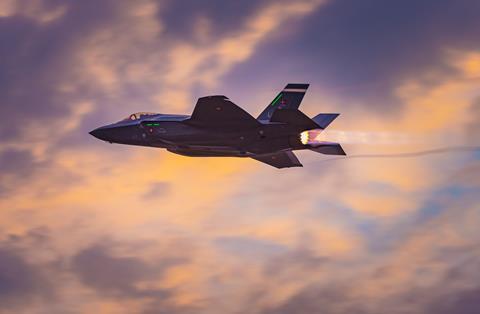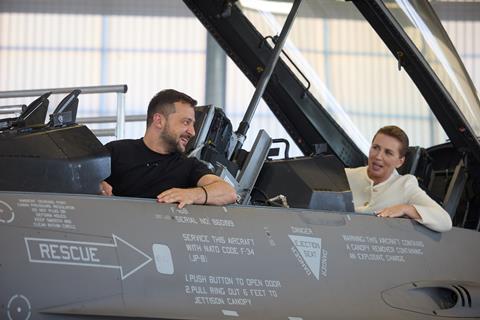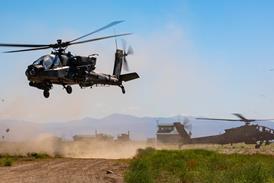Denmark is bringing home six Lockheed Martin F-35A stealth fighters from the USA, where they had been stationed for training purposes.
Copenhagen on 26 June said it will repatriate the fifth-generation fighter jets from Luke AFB in Arizona, citing delays at Lockheed in delivering new-build F-35s.
Lockheed is nearly a year behind schedule in certificating the latest configuration of the F-35, known at Technical Refresh 3 (TR-3). In 2023, the Pentagon stopped accepting new F-35s in the TR-3 configuration, while Lockheed works through the certification process.
Washington manages all F-35 orders and deliveries for overseas customers through the Pentagon’s Foreign Military Sales system.

Denmark’s six F-35s in Arizona were built in the older TR-2 loadout, meaning they are still fully certificated as flightworthy. New F-35 customers typically keep their first batch of jets at Luke AFB, where aviators and maintenance personnel receive the initial training needed to operate the fighters at home.
The Danish defence ministry says its decision to bring home the six fighter jets “makes it possible to increase the training level” of Royal Danish Air Force (RDAF) pilots and support personnel at home. Those F-35s leaving Luke AFB will be replaced by newer TR-3 jets as they become available.
Lockheed is developing a limited version of TR-3 that will at least allow those F-35s to be used for training purposes, while the full combat version is certificated.
Danish defence minister Troels Lund Poulsen says he asked the country’s armed forces to explore alternatives to the current arrangement, given the protracted lag in receiving new aircraft.
“It is very positive that we have now found a solution so that the delays from the manufacturer affect us as little as possible,” Poulsen says.

The situation is further complicated by plans already underway to dispose of Denmark’s fleet of legacy Lockheed F-16 Falcons, which includes 33 single-seat F-16As and 10 two-seat F-16B advanced trainers.
Copenhagen has agreed to sell Argentina 24 of the fighters, while donating the remainder of the fleet to beleaguered Ukraine. Both countries are set to get a mix of A and B models.
The first F-16 arrived in Argentina in April, complete with Argentine air force insignia. Senior NATO officials say they are poised to deliver the first F-16s to Ukraine this summer, following the completion of pilot and maintainer training.
The looming departure of RDAF F-16s has added urgency to the stalled F-35 acquisition, likely spurring the repatriation decision.
“The F-35 fighter jets are a major investment for Denmark, which will have an impact on our defence and security for many years to come,” says Poulsen. “It is absolutely crucial that we follow the phase-in closely.”
However, the defence ministry notes that the F-35 situation is not expected to affect the F-16s Denmark has pledged to Ukraine, nor the country’s obligations to the NATO alliance “in a crisis situation”.
Copenhagen brought home four F-35As in September 2023, marking the first examples of Denmark’s 27-aircraft order to reach the northern European country.
The country’s remaining stealth fighters are scheduled be delivered through 2027. They will be assigned to Fighter Wing Skrydstrup in Vojens, currently home the RDAF’s F-16 fleet.


























